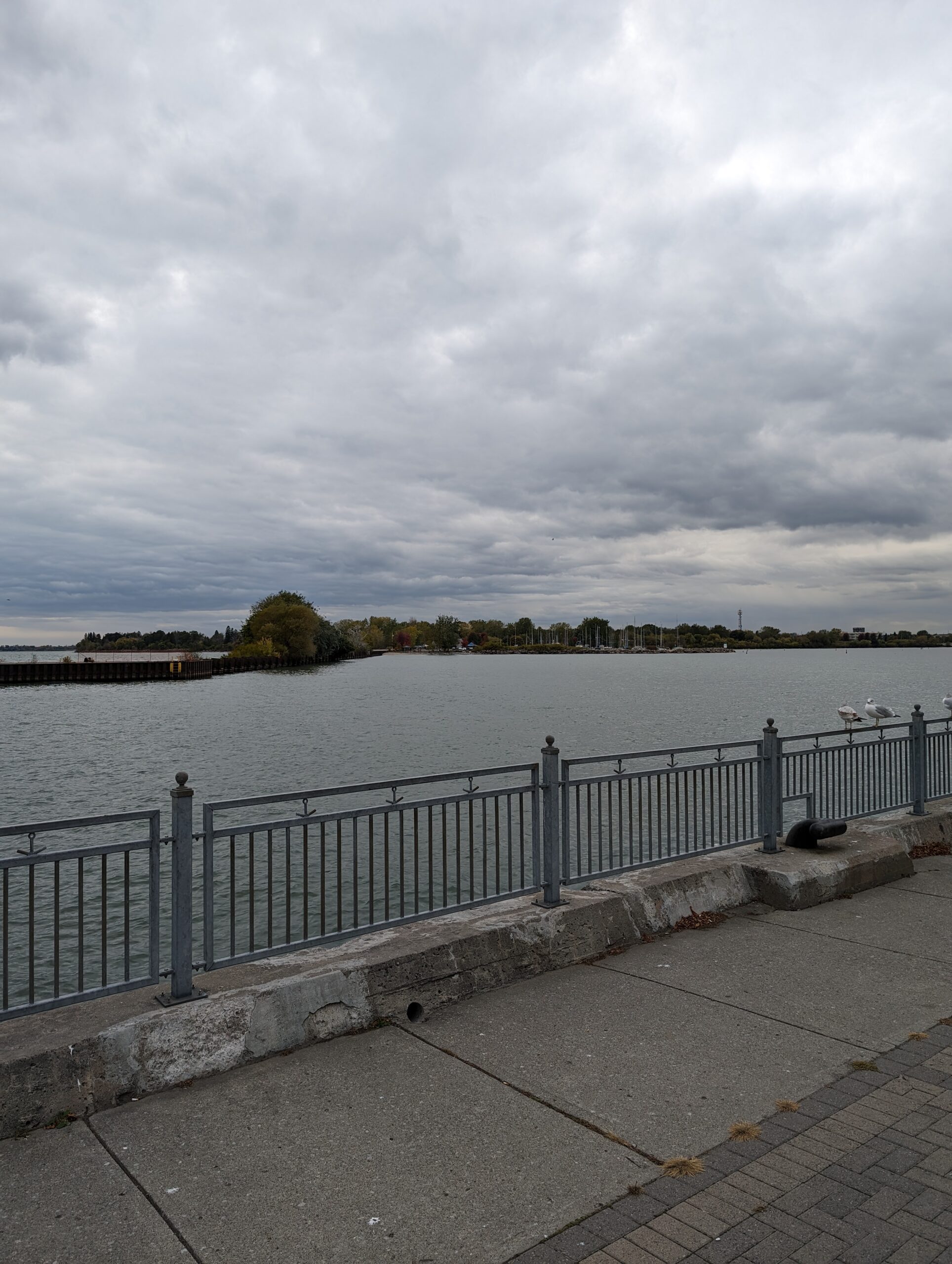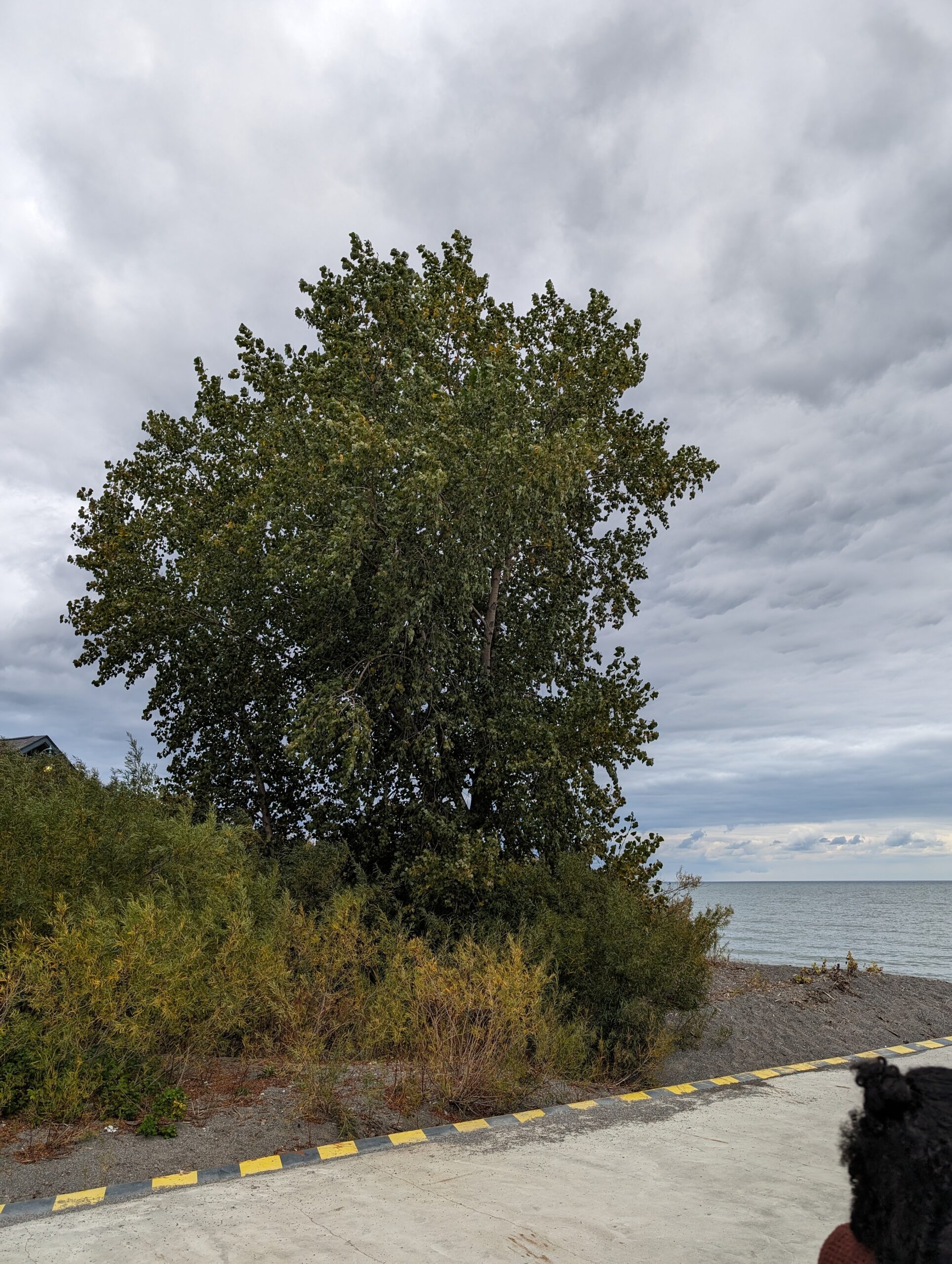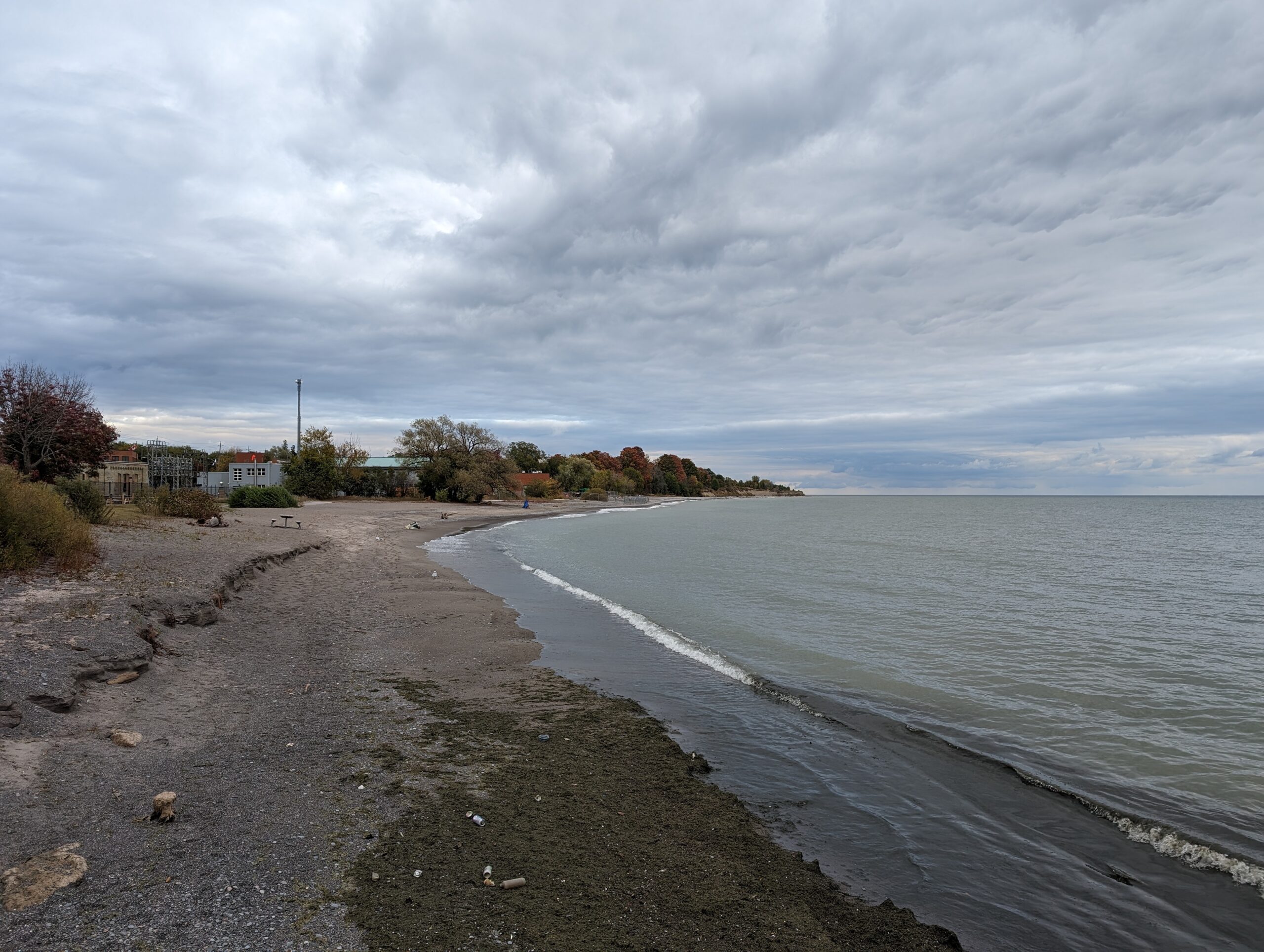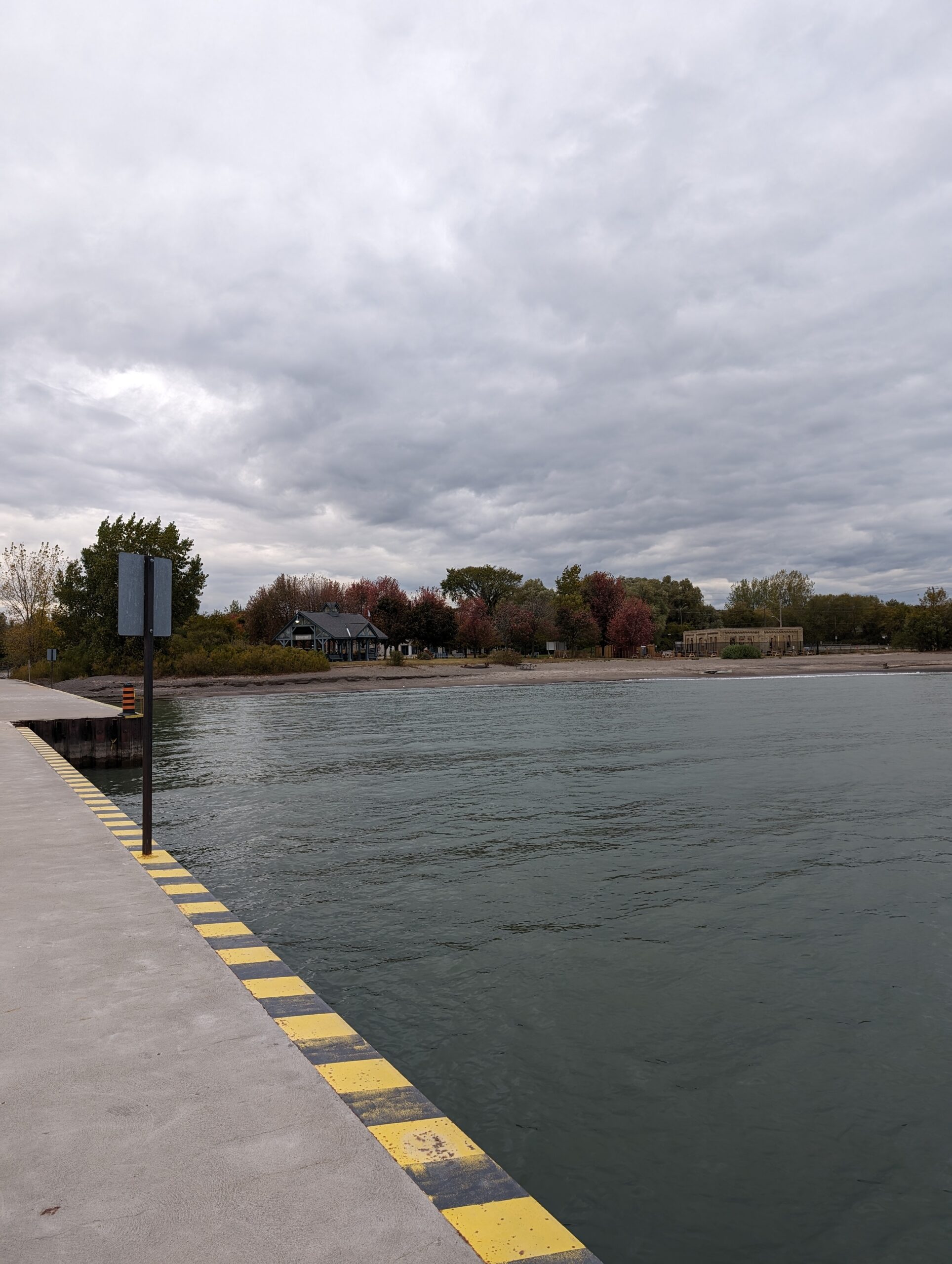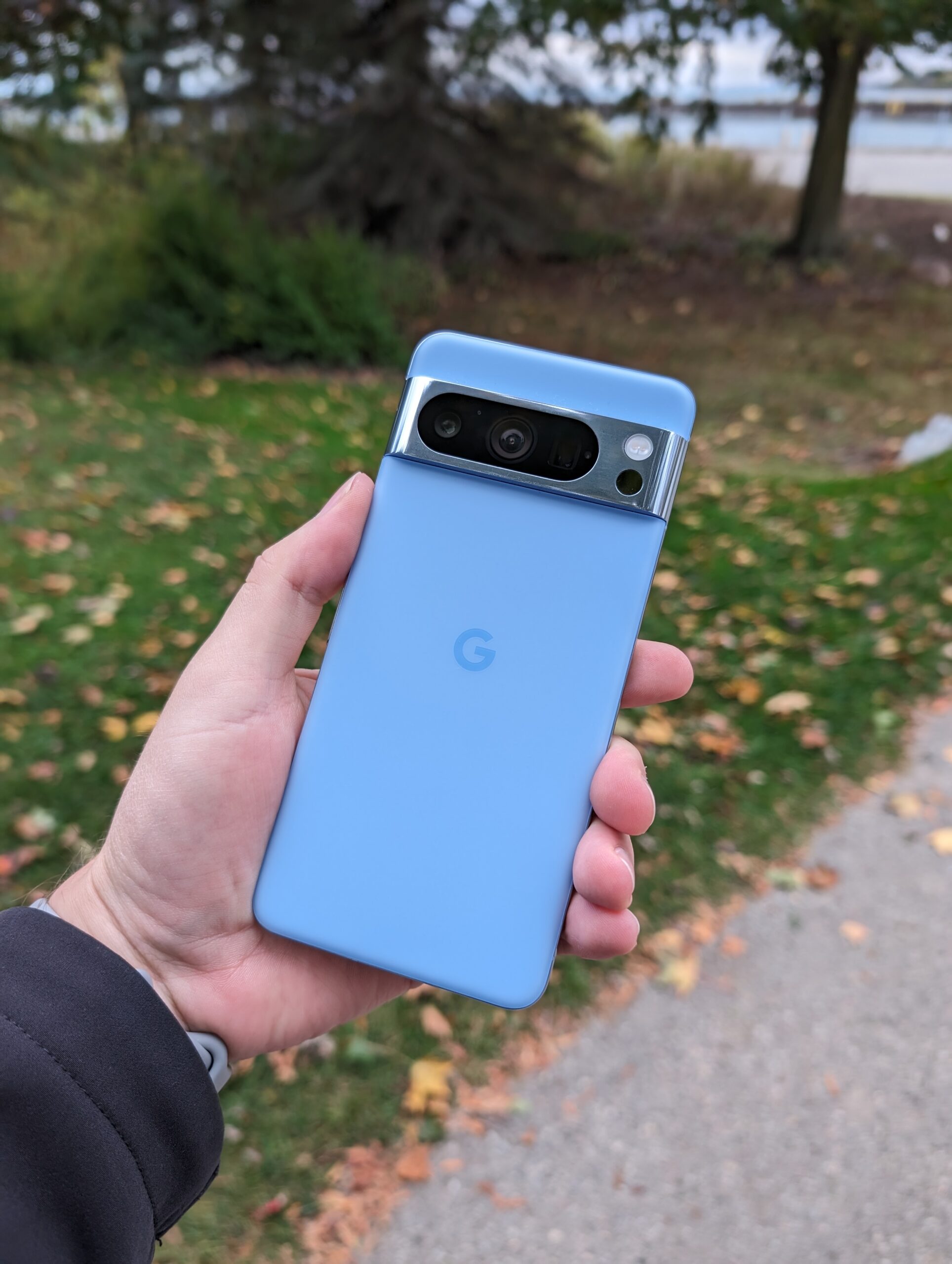The Pros
- Great display
- Bigger battery
- Smaller footprint
The Cons
- Tensor performance lacks
- Gimmicky new AI features
- Price hike in Canada
Google didn’t reinvent the smartphone wheel with the Pixel 8 series this year, but there’s still lots to like about the company’s new phones. I spent the last few days testing out the company’s Pixel 8 — you can read our Pixel 8 Pro review here — and generally, I’m quite happy with the phone.
First and foremost, the Pixel 8 is the first ‘small’ flagship Pixel in years, and Google managed to pull off the shrinking without significantly reducing the display size and bumping up the battery capacity compared to last year’s Pixel 7.![]() Beyond the size modifications, however, there’s little change to the Pixel 8 hardware compared to the Pixel 7. There’s a new ‘Actua’ display with up to 120Hz refresh rate, which is a nice bump over the Pixel 7. Additionally, there’s the new Tensor G3 chip, which boasts a slight performance boost and improved machine learning (ML) and artificial intelligence (AI) capabilities.
Beyond the size modifications, however, there’s little change to the Pixel 8 hardware compared to the Pixel 7. There’s a new ‘Actua’ display with up to 120Hz refresh rate, which is a nice bump over the Pixel 7. Additionally, there’s the new Tensor G3 chip, which boasts a slight performance boost and improved machine learning (ML) and artificial intelligence (AI) capabilities.
Unfortunately, one of the most intriguing hardware additions this year — the temperature sensor — is reserved for the Pixel 8 Pro.
The other big changes this year come in the form of software, namely AI tools, most notably in the camera department. I’ll go over these in greater detail in the camera section, but the short version is the Pixel 8 offers the reliable ML-boosted photography experience that Pixel phones are known for, while the AI features can be best described as gimmicky (when they even work).
![]() The important software improvement this year is Google’s promise of seven years of updates. But seven years is a long time, so we’ll have to see how well Google holds up on its end.
The important software improvement this year is Google’s promise of seven years of updates. But seven years is a long time, so we’ll have to see how well Google holds up on its end.
With all that said, let’s dig in and see if the Pixel 8 has enough new features to justify the $150 price hike over the Pixel 7.
Pixel 7
Pixel 8
Pixel 8 Pro
Display
6.3-inch FHD+ (1080 x 2400) OLED display, 416ppi, 90Hz refresh rate
6.2-inch FHD+ (1080 x 2400) OLED Actua Display, 428ppi, 60-120Hz refresh rate
6.7-inch, (1344 x 2992) QHD+ display, 489ppi, 1-120Hz refresh rate
Processor
Tensor G2
Tensor G3
Tensor G3
RAM
8GB of RAM
8GB of RAM
12GB of RAM
Storage
128GB, 256GB
128GB, 256GB
128GB, 256GB, 512GB, 1TB
Dimensions (in.)
6.1 x 2.9 x 0.3in (155.6 x 73.2 x 8.7mm)
5.9 x 2.8 x 0.4in (150.5 x 70.8 x 8.9mm)
6.4 x 3.0 x 0.3in. (162.6 x 76.5 x 8.8mm)
Weight
197g (6.9oz)
187g
213g
Rear Facing Camera
50-megapixel (primary) + 12-megapixel (ultrawide)
50-megapixel (f/1.69) + 12-megapixel (f/2.2)
50-megapixel (f/1.6) + 48-megapixel (f/1.95 x5 zoom,) + 48-megapixel (f/2.8)
Front Facing Camera
10.8-megapixel
10.5-megapixel (f/2.2)
10.5-megpaixel (f/2.2) autofocus
OS
Android 13
Android 14
Android 14
Battery
4,355mAh
4575mAh
5050mAh
Network Connectivity
LTE/ 5G
GSM / HSPA / LTE/ 5G
5G, LTE, Wi-Fi 6E
Sensors
Fingerprint (in-display), accelerometor, gyro, proximity, compass
Fingerprint (in-display), accelerometor, gyro, proximity, compass
Fingerprint (in-display), accelerometor, gyro, proximity, compass
SIM Type
Dual SIM (single nano-SIM and eSIM)
Nano SIM, eSIM
Nano SIM, eSIM
Launch Date
October 13, 2022
October 12, 2023
October 12, 2023
Misc
Colours: Obsidian, Snow, Lemongrass
Colours: Obsidian, Hazel, Rose
Colours: Obsidian, Porcelain, Bay (blue)
Display
Pixel 7
6.3-inch FHD+ (1080 x 2400) OLED display, 416ppi, 90Hz refresh rate
Pixel 8
6.2-inch FHD+ (1080 x 2400) OLED Actua Display, 428ppi, 60-120Hz refresh rate
Pixel 8 Pro
6.7-inch, (1344 x 2992) QHD+ display, 489ppi, 1-120Hz refresh rate
Processor
Pixel 7
Tensor G2
Pixel 8
Tensor G3
Pixel 8 Pro
Tensor G3
RAM
Pixel 7
8GB of RAM
Pixel 8
8GB of RAM
Pixel 8 Pro
12GB of RAM
Storage
Pixel 7
128GB, 256GB
Pixel 8
128GB, 256GB
Pixel 8 Pro
128GB, 256GB, 512GB, 1TB
Dimensions (in.)
Pixel 7
6.1 x 2.9 x 0.3in (155.6 x 73.2 x 8.7mm)
Pixel 8
5.9 x 2.8 x 0.4in (150.5 x 70.8 x 8.9mm)
Pixel 8 Pro
6.4 x 3.0 x 0.3in. (162.6 x 76.5 x 8.8mm)
Weight
Pixel 7
197g (6.9oz)
Pixel 8
187g
Pixel 8 Pro
213g
Rear Facing Camera
Pixel 7
50-megapixel (primary) + 12-megapixel (ultrawide)
Pixel 8
50-megapixel (f/1.69) + 12-megapixel (f/2.2)
Pixel 8 Pro
50-megapixel (f/1.6) + 48-megapixel (f/1.95 x5 zoom,) + 48-megapixel (f/2.8)
Front Facing Camera
Pixel 7
10.8-megapixel
Pixel 8
10.5-megapixel (f/2.2)
Pixel 8 Pro
10.5-megpaixel (f/2.2) autofocus
OS
Pixel 7
Android 13
Pixel 8
Android 14
Pixel 8 Pro
Android 14
Battery
Pixel 7
4,355mAh
Pixel 8
4575mAh
Pixel 8 Pro
5050mAh
Network Connectivity
Pixel 7
LTE/ 5G
Pixel 8
GSM / HSPA / LTE/ 5G
Pixel 8 Pro
5G, LTE, Wi-Fi 6E
Sensors
Pixel 7
Fingerprint (in-display), accelerometor, gyro, proximity, compass
Pixel 8
Fingerprint (in-display), accelerometor, gyro, proximity, compass
Pixel 8 Pro
Fingerprint (in-display), accelerometor, gyro, proximity, compass
SIM Type
Pixel 7
Dual SIM (single nano-SIM and eSIM)
Pixel 8
Nano SIM, eSIM
Pixel 8 Pro
Nano SIM, eSIM
Launch Date
Pixel 7
October 13, 2022
Pixel 8
October 12, 2023
Pixel 8 Pro
October 12, 2023
Misc
Pixel 7
Colours: Obsidian, Snow, Lemongrass
Pixel 8
Colours: Obsidian, Hazel, Rose
Pixel 8 Pro
Colours: Obsidian, Porcelain, Bay (blue)
Putting more in less
The Pixel 8 (right) and Pixel 7 (left).
I am one of the vocal minority of smartphone fans out there who prefer a smaller phone, and Google’s Pixel 8 manages to fit the bill quite nicely. What I find most impressive is that the Pixel 8 feels much smaller without sacrificing anything. For example, the Pixel 8 has a 6.2-inch display compared to the 6.3-inch display on the Pixel 7 (few will miss that 0.1-inch difference). The screens have the same 1080 x 2400 pixel resolution, though the Pixel 8 has a slightly higher 428ppi thanks to the smaller size.
Moreover, the Pixel 8 sports a slightly larger 4,575mAh battery than the Pixel 7’s 4,335mAh cell, all while slightly shrinking the dimensions to 150.5 x 70.8 x 8.9mm (the Pixel 7 clocked in at 155.6 x 73.2 x 8.7mm).
“There’s not a whole lot else to say about the Pixel 8 design beyond praising the size reduction.”
This all contributes to a phone that feels excellent in the hand — if you prefer small phones, that is. To put it into perspective, the Pixel 8 is almost exactly the same size as the Pixel 7a, though the 7a is a hair larger thanks to bigger bezels and sharper corners. The Pixel 8 clocks in a bit bigger than the Pixel 4 and iPhone XS, two devices that are also quite small. I unfortunately didn’t have a Pixel 5 to compare, but on paper, the Pixel 8 is only a bit taller.
From left to right: Pixel 4, 8, 7a, 7, 8 Pro.
Ultimately, for any Pixel users out there who have been waiting for a smaller version, the Pixel 8 will be the go-to option. It’s a truly great size that manages to feel comfortable and works well for one-handed use while still offering a large screen for watching content or playing games.
There’s not a whole lot else to say about the Pixel 8 design beyond praising the size reduction. It features the same glossy back glass panel as the Pixel 7 but in new colour options, the same matte aluminum frame, the same button and antenna placements. Regarding the back glass, it’s really a shame that only the Pixel 8 Pro offers soft-touch matte glass, which goes a long way toward improving grip ability for the insane who dare use their phones without a case (like I do).
As for the colour options, the Pixel 8 comes in ‘Obsidian,’ ‘Rose,’ and ‘Hazel,’ the colour of my review unit. In most light, the Hazel looks more like grey, but overall, it’s a nice shade. Still, the Pixel 8 Pro won on the colour front this year with the frankly stunning ‘Bay.’
An ‘Actua-ly’ good screen
Google really hyped up the new ‘Actua’ and ‘Super Actua’ displays on its Pixel 8 and 8 Pro. The ‘Actua’ portion is mostly branding, though I will say both the Pixel 8 and 8 Pro displays look excellent, offering realistic colours, clear and sharp text, and a welcome boost to brightness.
The Pixel 8 offers up to 1,400 nits brightness and a peak brightness of 2,000 nits, compared to 1,600 and 2,400 on the Pixel 8 Pro. There are a few notable differences between the Pixel 8 and 8 Pro displays beyond the size. First, the Pixel 8 offers a 60Hz-120Hz refresh rate, while the 8 Pro can drop all the way to 1Hz. That’s a product of the type of display each phone uses — both are OLED panels, but the Pixel 8 uses low-temperature polycrystalline silicon (LTPS) for the backplane, while the 8 Pro uses low-temperature polycrystalline oxide (LTPO). The main benefit of LTPO over LTPS is the ability to vary the refresh rate to reduce power consumption.
The other main difference between the displays is the type of glass used. The Pixel 8 sticks with Corning’s Gorilla Glass Victus, while the 8 Pro benefits from Victus 2 glass for better scratch resistance.
However, these differences are more significant on paper than in real-world use. Side-by-side, both the Actua and Super Actua screens look great to my eyes. The most palpable difference is the brightness. On the flip side, people rocking a phone with a 90Hz refresh rate probably won’t feel as big a difference going to 120Hz as they did going from 60Hz to 90Hz. That said, the Pixel 8 screen does feel very smooth, and I’m glad to have 120Hz on a flagship — 90Hz is a fantastic middle-ground option for mid-range phones like the A-series Pixel.
More reliable battery
![]() Moving along to performance and battery life, the Pixel 8 offered marginal improvements. In day-to-day use, like browsing social media, checking emails, watching videos, snapping pictures, streaming music, chatting with friends across various messaging apps, and playing the occasional game, the new Tensor G3 chip performed well. I didn’t notice any significant slowdowns or hiccups, nor did I encounter any major heat issues. That said, during heavy use, the Pixel 8 did get warm, but not any worse than other smartphones I’ve tried.
Moving along to performance and battery life, the Pixel 8 offered marginal improvements. In day-to-day use, like browsing social media, checking emails, watching videos, snapping pictures, streaming music, chatting with friends across various messaging apps, and playing the occasional game, the new Tensor G3 chip performed well. I didn’t notice any significant slowdowns or hiccups, nor did I encounter any major heat issues. That said, during heavy use, the Pixel 8 did get warm, but not any worse than other smartphones I’ve tried.
While benchmarks don’t always tell the whole story, I did run both the Pixel 8 and 8 Pro through Geekbench 6 to help compare them with some other phones. There are no real surprises here — the Pixel 8 and 8 Pro perform better than the 7 series but still come in well under flagships from Samsung and Apple.
Another interesting note is that the performance gap between the Pixel 8 and 8 Pro is wider this year than in years past, despite both phones sporting the Tensor G3.
As for battery, the Pixel 8 makes it to the end of the day comfortably. In some cases, I even ended my day with about 50 percent battery in the tank with typical use, while on heavier use days, I’d plug in before bed at around 30 percent. While the Pixel 7 also generally made it through the day for me, there was definitely more charging anxiety compared to the Pixel 8. Plus, on heavy-use days, I'd have to top up the Pixel 7 in the evening.
That said, it’s tough to fully evaluate the battery life after only a few days of use, especially when those are review days where I use the phone way more than normal to test out new features. Moreover, with Pixel phones offering ‘Adaptive Battery,’ I find it can take some time for the software to ‘adapt’ and even out the battery experience.
The Pixel photography you expect
![]() The Pixel 8 sports very similar camera hardware to the Pixel 7. Both have 50-megapixel primary sensors and 12-megapixel ultrawide sensors. The selfie camera is slightly different, clocking in at 10.5-megapixel on the Pixel 8 compared to 10.8-megapixel on the 7.
The Pixel 8 sports very similar camera hardware to the Pixel 7. Both have 50-megapixel primary sensors and 12-megapixel ultrawide sensors. The selfie camera is slightly different, clocking in at 10.5-megapixel on the Pixel 8 compared to 10.8-megapixel on the 7.
The minor hardware changes don’t amount to much of a difference in real-world testing, which is fine given the Pixel 7 camera was excellent and the Pixel 8 camera remains great.
Once again, the biggest issue with the Pixel 8 is the lack of optical zoom. The phone’s 2x sensor crop zoom, introduced on the Pixel 7 series, is still adequate in most scenarios. However, when you push beyond that to 5x or 8x, the image quality suffers. In a side-by-side with the Pixel 8 Pro’s 5x optical zoom, you can see the difference in the small details, like the lettering on the signs.
![]() Finally, it’s worth comparing the selfie cameras, given the small hardware differences. Below, you can see a comparison of the Pixel 7, 8, and 8 Pro selfie cameras.
Finally, it’s worth comparing the selfie cameras, given the small hardware differences. Below, you can see a comparison of the Pixel 7, 8, and 8 Pro selfie cameras.
![]() There’s a new macro mode as well, though it can be a bit tricky to activate. Macro mode comes on automatically once you bring the phone close enough to the subject you wish to capture. You’ll also need to be on the primary camera, not the ultrawide, to use it.
There’s a new macro mode as well, though it can be a bit tricky to activate. Macro mode comes on automatically once you bring the phone close enough to the subject you wish to capture. You’ll also need to be on the primary camera, not the ultrawide, to use it.
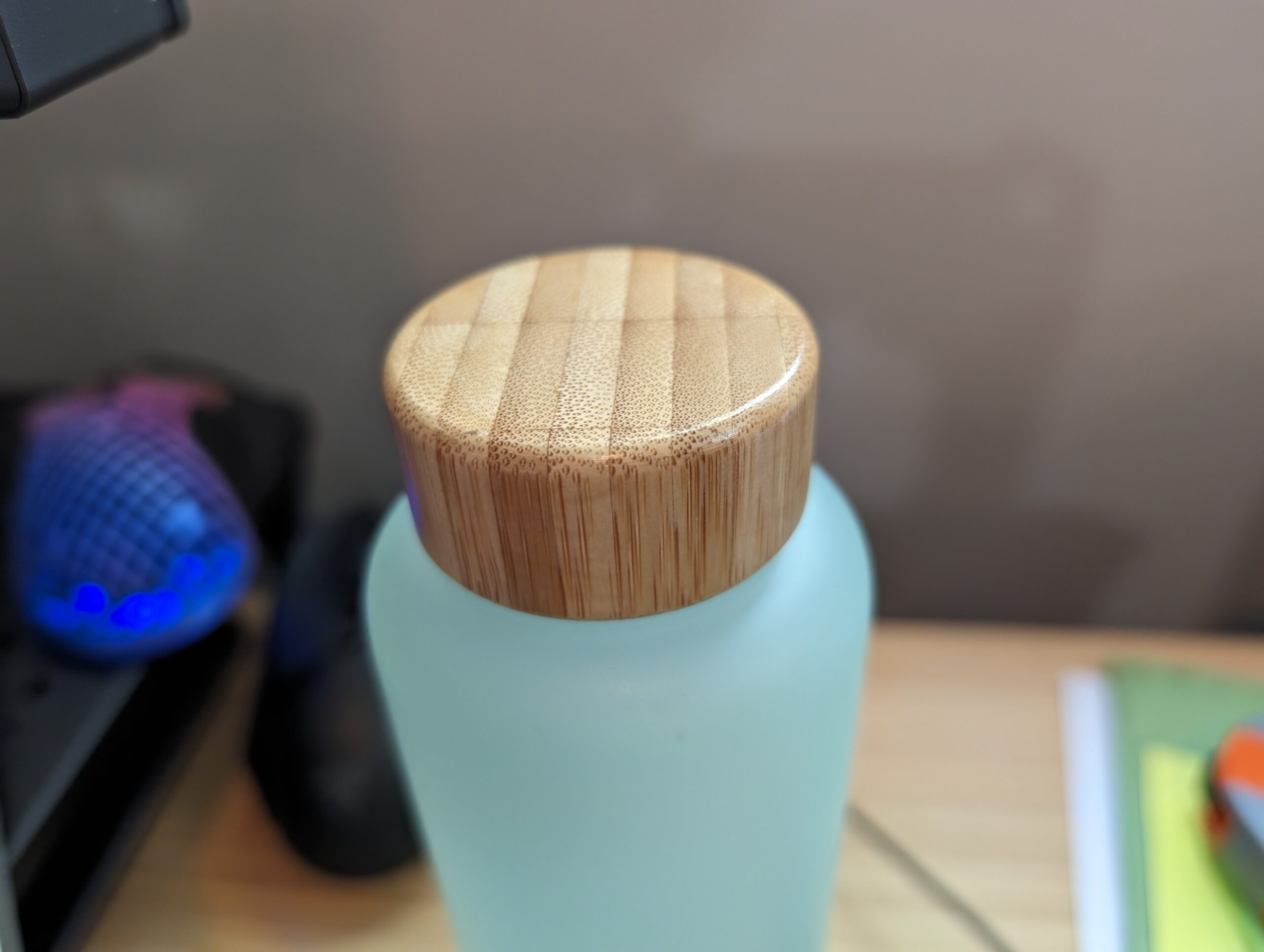
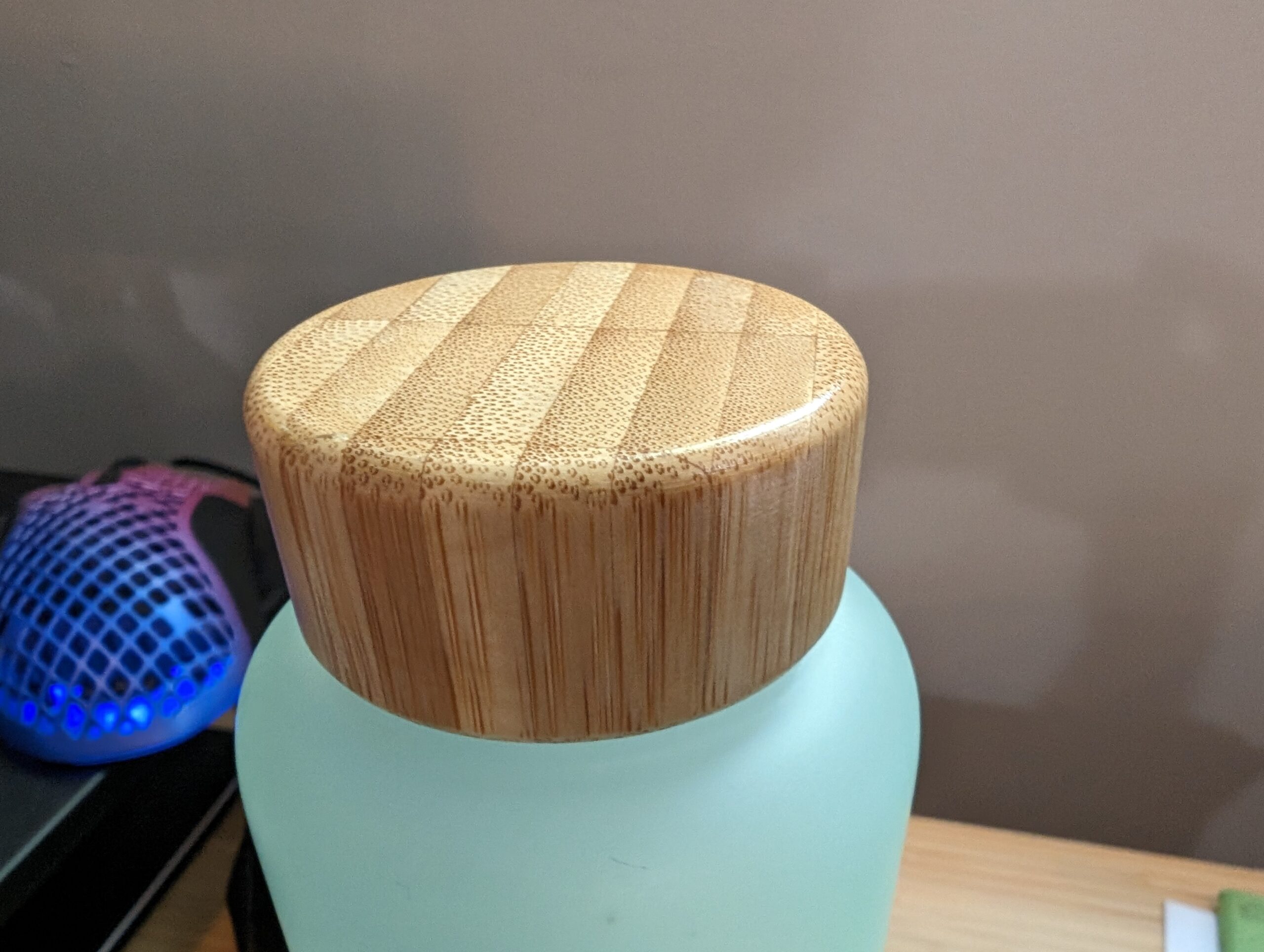
I also found it works significantly better when capturing still objects -- for example, in the gallery below, the macro shots of the purple flowers weren’t great because the wind was blowing them around, but the macro shot of the orange leaf turned out better.
Overall, the Pixel 8 maintains the excellent camera capabilities you’d expect from the Pixel series. It remains my preferred smartphone camera system since it allows me to quickly take out my phone, snap a picture, and be confident I got what I need.
What about those AI features?
![]() There are two main new AI camera features Google hyped up for the Pixel 8 series: 'Best Take' and ‘Magic Editor.’
There are two main new AI camera features Google hyped up for the Pixel 8 series: 'Best Take' and ‘Magic Editor.’
Unfortunately, in my testing, neither is particularly good.
Best Take claims to be able to replace people’s faces from across a series of images to make them better. For example, if you’re taking a group shot of your family and someone is blinking, Best Take can swap out that person’s face with their face from another shot.
Aside from valid concerns about doctoring all your memories with AI, the feature sounds useful on paper. I thought it would be especially useful with a family like mine where there’s always one person not looking at the camera, blinking, sneezing, or some other nonsense. And yet, when visiting family for Thanksgiving and taking several group shots, Best Take tended to make things worse. More often than not, the replacement face didn’t look quite right or had weird artifacts. In one test, Best Take swapped my mother’s face with one where her eyes were closed, making for a creepy-looking eyeless mask. In another test with my toddler, Best Take swapped her whole head but left a halo of hair from the old head around the new one.
Plus, Best Take sometimes wasn’t available at all. It only showed up on a small handful of photos I took -- to access it, I had to open the image in Google Photos, tap ‘Edit’ and then go to ‘Tools.’ Best Take would be there if it was available for the image I was working on.![]() As such, I likely won’t make much use of Best Take going forward, especially as long as Top Shot still exists. For those who may not remember, Top Shot captures a small chunk of video when you take a picture, effectively capturing the second before and after you click the shutter button. Then, you can pick individual frames from that burst – for example, grabbing a frame where someone’s eyes are opened if they’re blinking in the original image. No need for unreliable AI.
As such, I likely won’t make much use of Best Take going forward, especially as long as Top Shot still exists. For those who may not remember, Top Shot captures a small chunk of video when you take a picture, effectively capturing the second before and after you click the shutter button. Then, you can pick individual frames from that burst – for example, grabbing a frame where someone’s eyes are opened if they’re blinking in the original image. No need for unreliable AI.
Magic Editor was a similar story, though sometimes it pulled off impressive changes. Google notes that Magic Editor is a feature that’s “coming soon,” so I was surprised to gain access to it during the review, though that’s likely a side effect of having a review device.
I think Magic Editor can be best described as a generative AI tool that Google jammed into Google Photos. It’s accessible in the ‘Edit’ menu on images by tapping a colourful circle in the bottom-left corner. Once you’re in Magic Editor, you can tap a wand button to get automatic suggestions or tap or circle parts of the image to change it, similar to erasing stuff with Magic Eraser. There is some overlap here -- for example, you can use Magic Editor to erase stuff, too. However, I found it was much more likely to screw up than Magic Eraser.
Google's new Pixel 8 Case is surprisingly nice.
For some tasks, Magic Editor performed decently well. For example, if I wanted to add portrait blur to an image, it was pretty good at doing that. Whatever changes you make, Magic Editor generates a few variations, and you can pick the one you like best. I also found it worked well at replacing the sky and adjusting the colour of a photo to match the new lighting (i.e. if you add a sunset to an image, it makes everything look slightly yellower to match).
In other instances, Magic Editor really struggled. When erasing simple objects, like a bag sitting on a table, Magic Editor took a chunk of the table with it. In another test where I tried replacing a boring beige wall in the background of an image, Magic Editor replaced it with what appeared to be a shower with a very skewed perspective.
"Overall, the Pixel 8 is a great device, offering refinements over the Pixel 7 without rewriting Google’s Pixel formula."
While it’s neat that the Pixel 8 is capable of making such significant alternations to images, I also find it concerning. I often take photos to remember moments, but what does it mean if I can alter the image to the point it no longer accurately reflects reality? Not everyone will feel this way, but that alone is a compelling reason not to use the feature, and the fact that it doesn’t work that well is another. Outside of testing the feature for this review, I really don’t see myself using Magic Editor again in the future.
Everything else
![]() The camera AI features are far from the only ‘intelligent’ additions Google made this year, though many of the other new features are not available in Canada. Google Assistant got several improvements and can now help summarize content on screen (if you live in the U.S.).
The camera AI features are far from the only ‘intelligent’ additions Google made this year, though many of the other new features are not available in Canada. Google Assistant got several improvements and can now help summarize content on screen (if you live in the U.S.).
There are improvements to Assistant voice typing too, though in my usage, I really didn’t notice a difference. Assistant voice typing remains as good as ever.
Other changes include improvements to the At a Glance widget, a more realistic-sounding voice for Call Screen, and general improvements to calling features, which Google now calls ‘Pixel Call Assist.’
These improvements are welcome but generally won’t be noticeable in typical use.
Is it worth the money?
Overall, the Pixel 8 is a great device, offering refinements over the Pixel 7 without rewriting Google’s Pixel formula. Coupled with the price hike, it makes it tough to recommend in many cases. Is the Pixel 8 better than the Pixel 7? Yes. Is it $150 better? No.
But if you have a Pixel 7, you really don’t need to think about upgrading at all. Likewise for the Pixel 6. These phones aren’t that old and still have a couple years of software support ahead of them.
However, if you’ve got an older Pixel phone and you’ve been holding onto it waiting for Google to finally give you another small flagship option, now is the time to upgrade.
Moreover, Google’s Pixel 8 still comes in cheaper than comparable options from Samsung or Apple. At $949 in Canada, the Pixel 8 is $150 cheaper than the Galaxy S23 and $180 cheaper than the iPhone 15. The value argument for the Pixel 8 isn’t as strong as it was for the Pixel 7, but it’s definitely still a lower-cost flagship option that can go toe-to-toe with the more expensive phones.
The Pixel 8 starts at $949 in Canada and is available starting October 12th.
"The Pixel 8 is a great upgrade option for people who like small Google flagships."
MobileSyrup may earn a commission from purchases made via our links, which helps fund the journalism we provide free on our website. These links do not influence our editorial content. Support us here.


